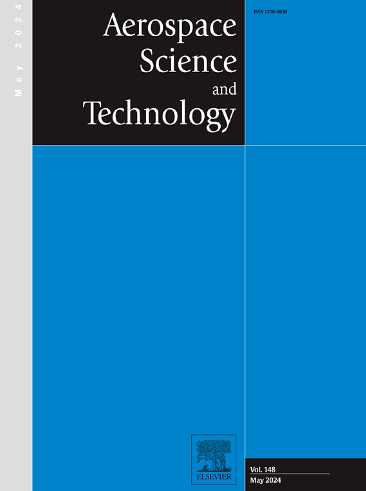Experimental and numerical investigation on the spraying performance of an agricultural unmanned aerial vehicle
IF 5
1区 工程技术
Q1 ENGINEERING, AEROSPACE
引用次数: 0
Abstract
This study uses numerical and experimental methods to investigate the impact of propeller-atomizer distance on the spraying performance of agricultural unmanned aerial vehicles (UAVs). A one-propeller-atomizer setup under crosswind conditions is analyzed to generalize findings for any UAV. The numerical approach employs the finite volume method (FVM) in Ansys Fluent, utilizing an Eulerian-Lagrangian framework, the SST k-ω turbulence model, and the multiple reference frame (MRF) technique for steady flow field and unsteady particle tracking. The model incorporates the propeller, atomizer, crosswind, and ground effect interactions. The influence of propeller-atomizer distance on spraying performance was evaluated through a series of high-resolution tracking simulations on three test cases. The results were experimentally validated using smoke and laser sheet visualization to track particle behavior. Results reveal a strong correlation between propeller-atomizer distance and spraying efficiency, highlighting key factors such as coverage, particle distribution, and penetrability. These findings enable improvements in UAV-based plant protection, enhancing droplet coverage, distribution, penetration, and mixing. The study suggests manufacturers consider integrating telescopic mechanisms for adjustable propeller-atomizer distances to optimize performance. If a fixed distance is required, medium-distance settings are recommended to effectively accommodate both short and tall plants. This research provides valuable insights for optimizing UAV spraying systems and advancing agricultural precision and efficiency.
求助全文
约1分钟内获得全文
求助全文
来源期刊

Aerospace Science and Technology
工程技术-工程:宇航
CiteScore
10.30
自引率
28.60%
发文量
654
审稿时长
54 days
期刊介绍:
Aerospace Science and Technology publishes articles of outstanding scientific quality. Each article is reviewed by two referees. The journal welcomes papers from a wide range of countries. This journal publishes original papers, review articles and short communications related to all fields of aerospace research, fundamental and applied, potential applications of which are clearly related to:
• The design and the manufacture of aircraft, helicopters, missiles, launchers and satellites
• The control of their environment
• The study of various systems they are involved in, as supports or as targets.
Authors are invited to submit papers on new advances in the following topics to aerospace applications:
• Fluid dynamics
• Energetics and propulsion
• Materials and structures
• Flight mechanics
• Navigation, guidance and control
• Acoustics
• Optics
• Electromagnetism and radar
• Signal and image processing
• Information processing
• Data fusion
• Decision aid
• Human behaviour
• Robotics and intelligent systems
• Complex system engineering.
Etc.
 求助内容:
求助内容: 应助结果提醒方式:
应助结果提醒方式:


